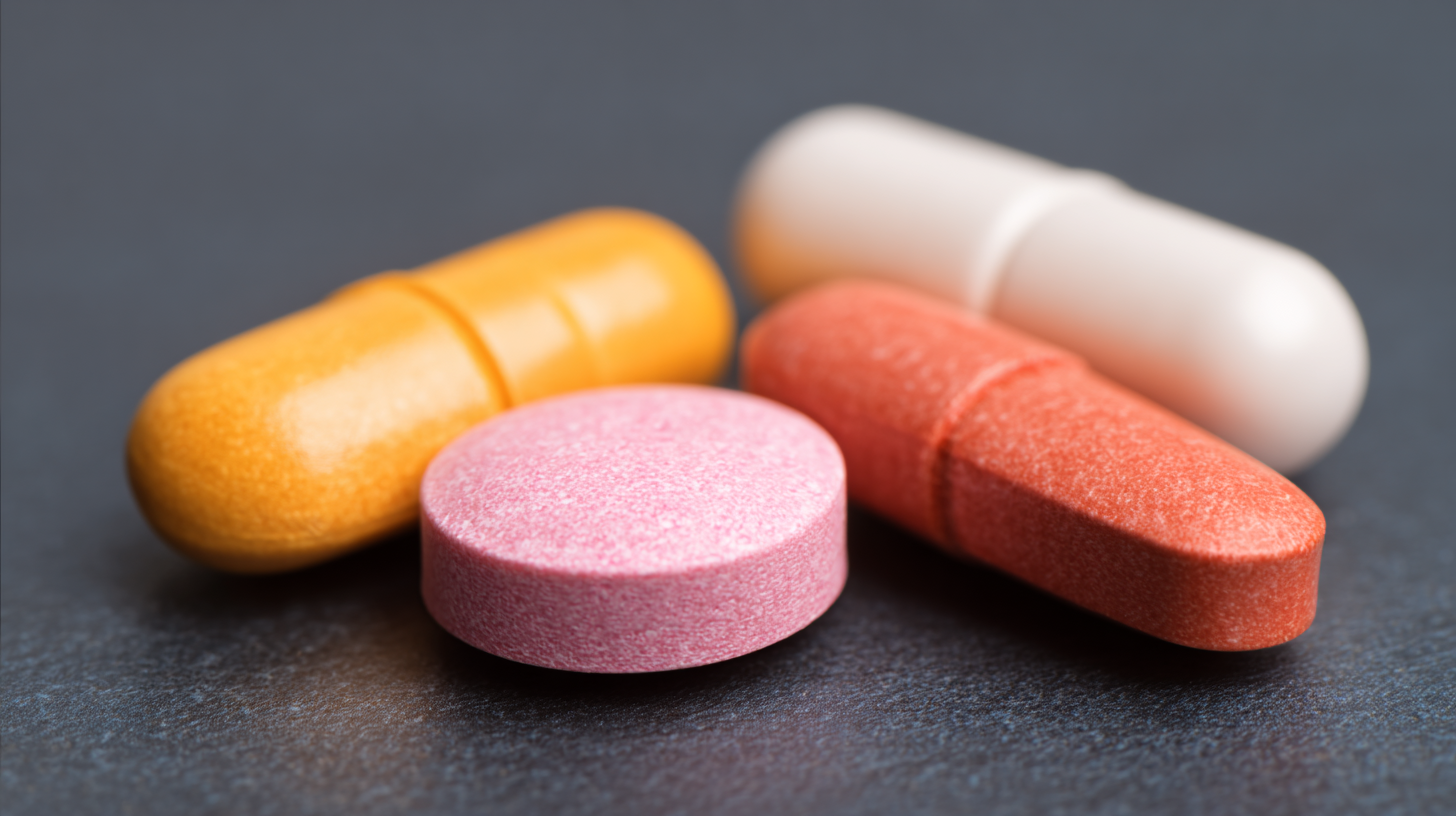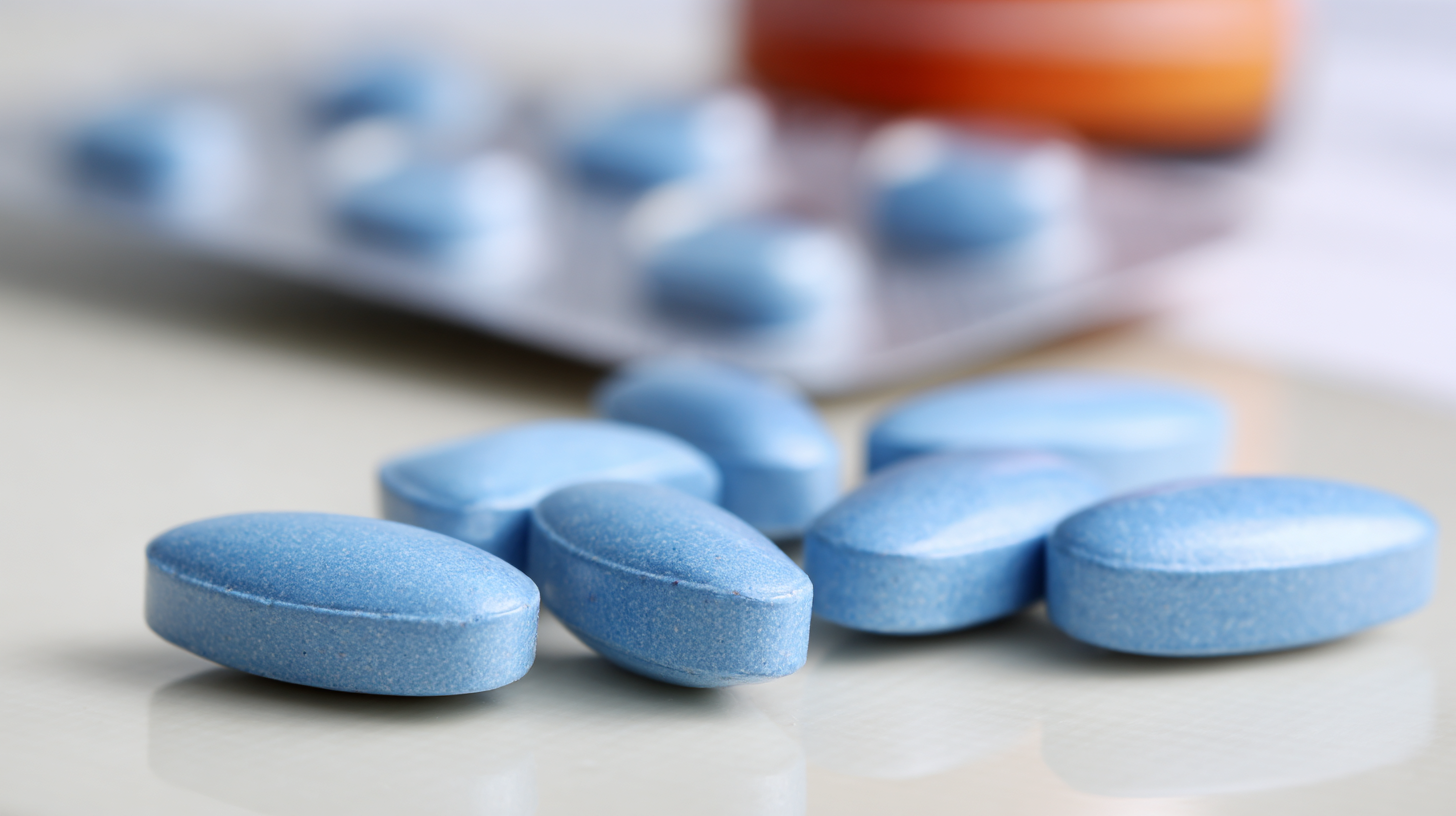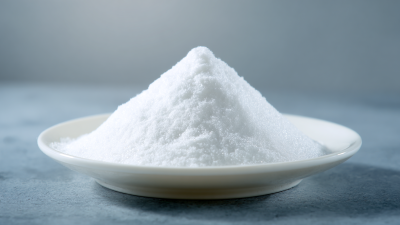
News
How to Use Valaciclovir Hcl Effectively for Managing Herpes Simplex Virus Infections
Valaciclovir Hcl is a potent antiviral medication widely used in the effective management of
herpes simplex virus (HSV) infections, which affects millions globally. According to the
World Health Organization, an estimated 500 million people are living with
HSV-2, and the prevalence of HSV-1 is increasing,
particularly in oral infections.
 Valaciclovir works by inhibiting viral DNA replication, thus reducing the severity and duration of outbreaks.
Clinical studies have demonstrated that early intervention with Valaciclovir can significantly lessen recurrence rates and associated symptoms,
promoting better quality of life for those affected.
As healthcare professionals continue to seek effective treatment strategies, understanding how to use Valaciclovir Hcl effectively becomes crucial in combating the
widespread impact of herpes infections. This guide aims to provide comprehensive insight into the optimal use of Valaciclovir Hcl for individuals managing
HSV, ensuring better health outcomes in the face of this common viral challenge.
Valaciclovir works by inhibiting viral DNA replication, thus reducing the severity and duration of outbreaks.
Clinical studies have demonstrated that early intervention with Valaciclovir can significantly lessen recurrence rates and associated symptoms,
promoting better quality of life for those affected.
As healthcare professionals continue to seek effective treatment strategies, understanding how to use Valaciclovir Hcl effectively becomes crucial in combating the
widespread impact of herpes infections. This guide aims to provide comprehensive insight into the optimal use of Valaciclovir Hcl for individuals managing
HSV, ensuring better health outcomes in the face of this common viral challenge.
Understanding Valaciclovir HCl: Mechanism of Action Against Herpes Simplex Virus
Valaciclovir HCl is an antiviral medication commonly used to manage infections caused by the herpes simplex virus (HSV), including oral and genital herpes. The drug is a prodrug of acyclovir, meaning that it is converted into acyclovir in the body. This conversion is crucial because acyclovir is the active compound that exhibits antiviral activity. Once inside the body, valaciclovir is rapidly metabolized, allowing for effective treatment with less frequent dosing compared to acyclovir alone.
The mechanism of action of valaciclovir against HSV involves selective inhibition of viral DNA synthesis. After being converted to acyclovir, it is phosphorylated by viral thymidine kinase to form acyclovir monophosphate. This compound is subsequently transformed into acyclovir triphosphate, which competes with deoxyguanosine triphosphate for incorporation into the viral DNA strand. The incorporation of acyclovir triphosphate results in chain termination during viral DNA replication, effectively preventing the virus from multiplying. By targeting the viral replication process, valaciclovir diminishes symptoms, reduces the duration of outbreaks, and lessens the risk of transmission.
How to Use Valaciclovir Hcl Effectively for Managing Herpes Simplex Virus Infections
| Parameter | Details |
|---|---|
| Generic Name | Valaciclovir HCl |
| Indication | Management of herpes simplex virus infections. |
| Mechanism of Action | Inhibits viral DNA synthesis by converting to acyclovir. |
| Dosage Form | Oral tablets |
| Common Dosage | 500 mg to 1 g, 1 to 3 times daily. |
| Side Effects | Nausea, headache, dizziness, diarrhea. |
| Contraindications | Known hypersensitivity to valaciclovir or acyclovir. |
| Drug Interactions | Probenecid may increase valaciclovir levels. |
| Patient Monitoring | Renal function, signs of neurological complications. |
Proper Dosage Guidelines for Valaciclovir HCl in Herpes Simplex Management
Proper dosing is crucial when using Valaciclovir HCl for managing Herpes Simplex Virus (HSV) infections. According to the Centers for Disease Control and Prevention (CDC), the typical dosage for treating initial genital herpes in adults is 1,000 mg orally three times a day for 7 to 10 days. For recurrent episodes, the recommended dose is 500 mg twice a day for 3 days. This precise administration addresses the viral replication during flare-ups, significantly reducing the duration and severity of outbreaks.
For long-term suppression of recurrent genital herpes, daily dosing can provide significant benefits. Studies show that a daily dose of 500 mg of Valaciclovir can reduce the likelihood of transmission by an impressive 50% compared to placebo, illustrating its efficacy not only in individual management but also in public health contexts. Moreover, evidence from clinical trials highlights that maintaining adherence to the prescribed dosage improves outcomes, underscoring the importance of educating patients about proper use to optimize their therapeutic responses.
Valaciclovir HCl Dosage Guidelines for Herpes Simplex Management
This chart illustrates the recommended dosages of Valaciclovir HCl for managing Herpes Simplex Virus infections, highlighting the dosage variations for different medical conditions.
Best Practices for Timing and Frequency of Medication Administration
 When managing herpes simplex virus infections with valaciclovir HCl, timing and frequency of medication administration are critical factors that influence therapeutic outcomes. Best practices suggest initiating treatment at the first sign of an outbreak, such as tingling or itching, to maximize the antiviral effects. Regular dosing as prescribed ensures consistent drug levels in the body, helping to suppress viral replication more effectively.
When managing herpes simplex virus infections with valaciclovir HCl, timing and frequency of medication administration are critical factors that influence therapeutic outcomes. Best practices suggest initiating treatment at the first sign of an outbreak, such as tingling or itching, to maximize the antiviral effects. Regular dosing as prescribed ensures consistent drug levels in the body, helping to suppress viral replication more effectively.
In addition, it is essential to consider patient-specific factors, including age, weight, and overall health, which may impact pharmacokinetic parameters such as absorption, distribution, metabolism, and elimination of the drug. For instance, in neonates, the immature liver and renal function can significantly alter drug clearance rates. Therefore, healthcare providers should closely monitor neonates receiving antivirals for any signs of adverse effects or incomplete drug response, adjusting dosages as necessary. Documenting these practices and patient responses can also optimize the use of long-acting injectable therapies, enhancing care continuity and improving patient outcomes.
Monitoring and Managing Side Effects When Using Valaciclovir HCl
When using Valaciclovir HCl for managing herpes simplex virus (HSV) infections, it is crucial to monitor and manage potential side effects effectively. Common side effects may include headache, dizziness, nausea, and gastrointestinal discomfort. Patients should be educated about these possible reactions and encouraged to report any persistent or severe symptoms to their healthcare provider. Regular follow-ups can help identify any adverse effects early on, allowing for timely adjustments to the treatment plan.
Additionally, kidney function should be closely monitored, especially in individuals with pre-existing renal conditions. Valaciclovir is primarily eliminated through the kidneys, and impaired renal function can lead to increased drug levels in the bloodstream, heightening the risk of toxicity. Routine blood tests to assess renal function and hydration status are essential in ensuring the safety and efficacy of the treatment. Patients should also be advised to maintain adequate fluid intake to support kidney function while on Valaciclovir therapy. By proactively managing these aspects, individuals can improve their overall treatment experience and minimize the impact of side effects.

Combining Valaciclovir HCl with Other Treatments for Enhanced Effectiveness
Combining Valaciclovir HCl with other treatments can significantly enhance the management of Herpes Simplex Virus (HSV) infections. Valaciclovir, an antiviral medication, works effectively to reduce viral activity and decrease the frequency of outbreaks. However, its optimal efficacy can be achieved when used in conjunction with other therapeutic modalities. For instance, recent studies indicate that combining Valaciclovir with topical acyclovir can enhance antiviral effects, potentially reducing healing times and offering greater symptom relief during outbreaks. According to a 2021 report from the Journal of Clinical Virology, patients receiving this dual therapy experienced a 25% reduction in lesion duration compared to those treated with Valaciclovir alone.
Additionally, the integration of immune modulators, such as interferons, with Valaciclovir has shown promising results in improving patient outcomes. Research published in the Journal of Infectious Diseases revealed that this combination not only lowers viral load but also enhances the immune response against HSV, providing longer-lasting protective benefits. Furthermore, lifestyle modifications, including stress management and dietary changes, can complement antiviral therapies by strengthening the immune system, which is essential in managing HSV. By adopting a multifaceted approach that combines Valaciclovir with other treatments, patients can achieve a more effective management strategy for Herpes Simplex Virus infections.
Related Posts
-

Comprehensive Strategies for Effective Use of Valaciclovir Hcl
-

5 Key Benefits of Valaciclovir HCl: Your Top Choice for Effective Treatment
-

Ultimate Checklist for Sourcing the Best Tylosin Tartrate in Global Markets
-

Key Factors to Identify Reliable Manufacturers of Propylene Glycol for Global Buyers
-

Explore Global Demand for Ethyl Acetate at the Successful 137th Canton Fair in Guangzhou
-

Unmatched Quality and Excellence in Valaciclovir Hcl Manufacturing from China





